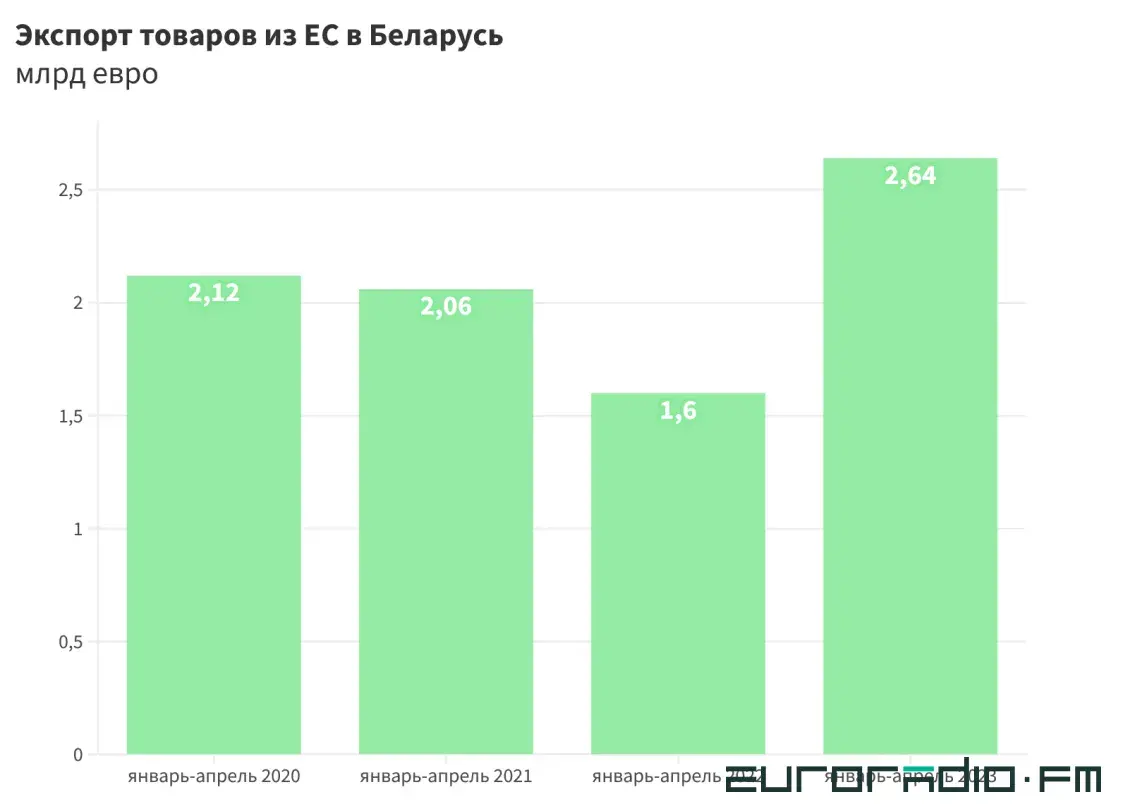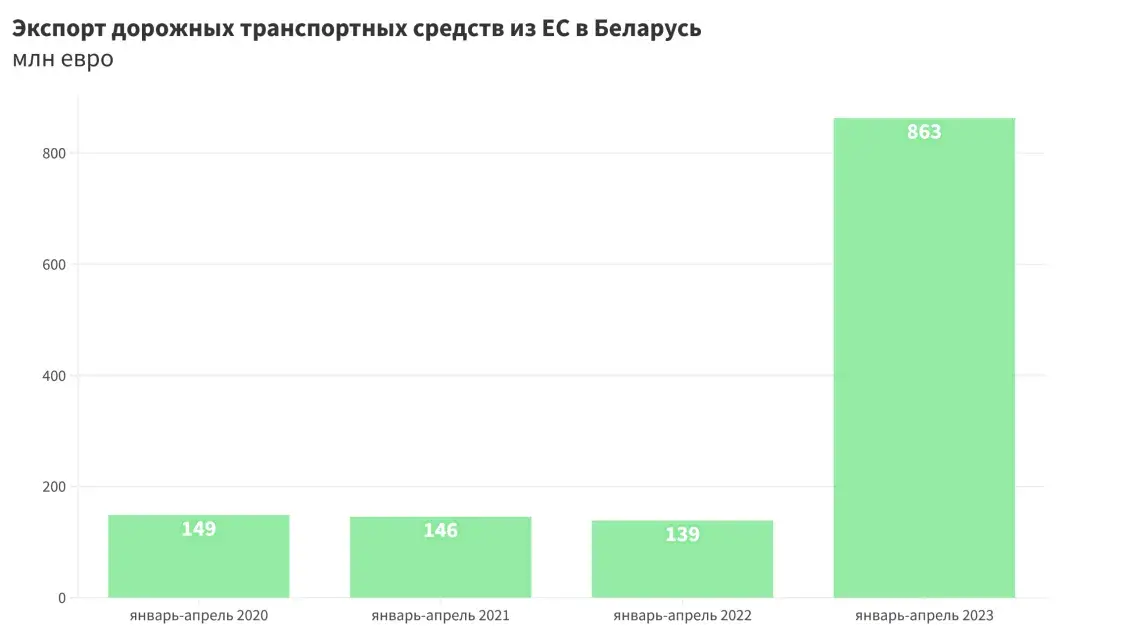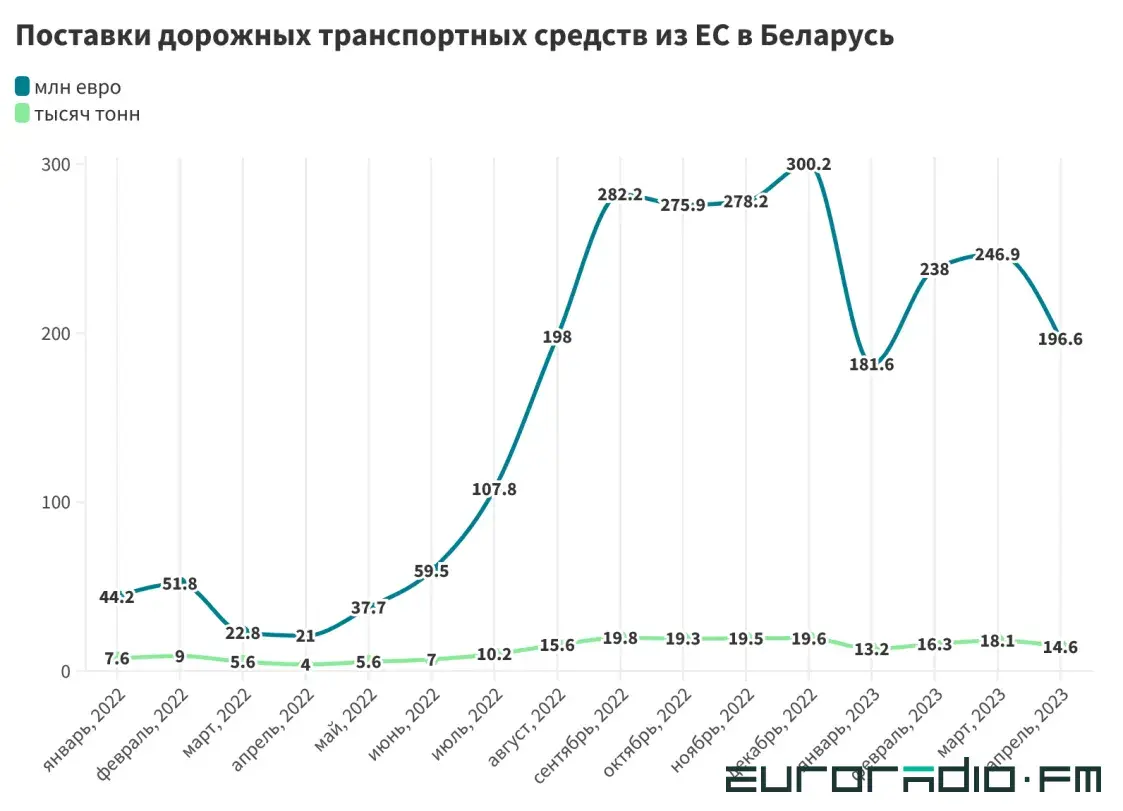Deliveries of goods from the EU to Belarus have skyrocketed. Why?

Are the good old schemes back in business? / Collage by Ulad Rubanau, Euroradio
Belarus has sharply increased its purchases from the EU. It doesn't seem that the goods for which the main growth occurred are so much needed by Belarus. Is the country again involved in schemes to resell European products?
Euroradio found out what and from which countries Belarus started to buy sharply and searched for the answer as to why.
According to Eurostat, at the beginning of 2023, the supply of goods from the EU to Belarus increased by 64.5% compared to the beginning of 2022. While in the four months of last year European exports to Belarus amounted to 1.6 billion euros, in January-April 2023 they totaled 2.64 billion euros. In terms of prices, this is even more than in the same months of 2021 and 2020.
The flow of goods in the first four months of 2023 also grew in physical terms - plus 35% (from 405 thousand tons to 549 thousand tons).
What did Belarus buy?
The top 5 most demanded groups included
- Machinery and transport equipment (43.1% of the total)
- Chemicals and related products (24%)
- Industrial goods (10.3%)
- Food and live animals (9.2%)
- Miscellaneous manufactured goods (6.4%)
Although volumes of the last three commodity groups increased compared to the beginning of 2022, they were not significantly different from the same period in 2020 and 2021.
Supplies of chemicals in price terms increased by about 40% compared to January-April of the previous three years. However, Belarus has been increasing purchases of this commodity group for several years.
The data on the commodity group "Machinery and transport equipment" look much more interesting. Belarus paid 1.14 billion euros for them. This is twice as much as in January-April 2022 (0.56 billion €). Or about 33% more than in the same period of 2021 and 2020 (about 0.85 billion €).
"Road vehicles" account for 75.5% of imports from the EU in the "machinery and transport equipment" group. In January-April 2020-2022, road vehicles were purchased for amounts between 134 and 149 million euros. And in January-April 2023 -- already for 863 million euros, i.e. six times more. This is 206 million euros more than for the whole of 2021.
Maybe cars from Europe have just become six times more expensive? Not quite. If we compare by weight, then in early 2023, the supplies increased 2.4 times compared to the beginning of 2022 and a little less - compared to the same periods of the previous two years.
Which Europeans bring vehicles to Belarus?
The main European suppliers to Belarus in January-April were Poland (30.5% of the total volume), Lithuania (23.8%) and Germany (23.3%). The same countries increased their deliveries to Belarus the most. Poland - more than two times, Lithuania - 2.5 times and Germany - 1.9 times.
The main growth was due to the goods labeled as "road vehicles". Germany supplies them the most. While in January-April there were purchased vehicles worth 42.3 million euros, in January-April 2023 - 327 million euros.
Sales from Lithuania increased from 53 million euros to 291 million euros. Poland increased deliveries almost tenfold, from 22.6 million euros to 207.7 million euros.
What is happening and when did it start?
According to Eurostat, most "road vehicles" are "motor cars and other motor vehicles designed primarily for carrying persons (other than motor vehicles for carrying ten or more persons, including the driver), including station wagons and racing cars". It turns out that these are mostly passenger cars.
But where did these volumes go to in Belarus, if the car market only began to recover at the beginning of the year, and the boom is not expected in 2023. Besides, the Belarusian Automobile Association (BAA) claims that Geely is the most popular brand.
So why are cars still being imported from the EU? Maybe Belarus is helping Russians to drive something other than a Lada?
Interestingly, in the first four months of 2022 there were no anomalies. And by the end of 2022 Belarus has already paid 2.5 times more for road vehicles than in 2021. By weight, the growth was 31%. All because deliveries have been much higher than usual since July 2022.
Against this background, European sales of road vehicles to Russia collapsed. While in January 2022 they amounted to 688.4 million euros, in April 2023 they amounted to 66.6 million euros.
It is impossible to say anything without documents. However, the statistics show that after the upheaval in the Russian market it took Belarus a few months to start deliveries of European cars to Russia.





















